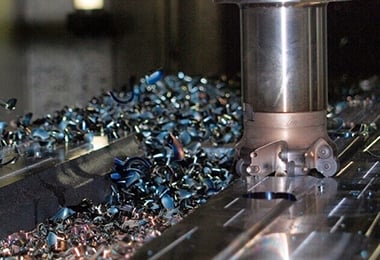Precision is essential. In the rapid manufacturing process of CNC machining, digital three-dimensional designs are converted into plastic or metal components by selectively removing material from the design.
For the production of parts and prototypes, CNC machining services are required by a large number of businesses, and the technology is used in a wide variety of industries.
CNC machining, on the other hand, is available in a wide range of shapes and dimensions. The hardware used to cut material varies significantly between CNC machines, despite the fact that all CNC machining technologies follow a similar workflow — software converts digital designs into machine instructions, which in turn instruct the CNC machine to cut material — despite the fact that all CNC machining technologies follow a similar workflow.
CNC milling machines and CNC turning (or lathes centers) machines are the two types of machines discussed in this article, and the main differences between the two types of machines are discussed in this article.

We will discuss the fundamental characteristics of CNC milling and turning in this article, as well as the primary advantages of each technology, as well as some examples of common parts that businesses can manufacture using each method.
What exactly is CNC milling, and how does it function?
Machine operators can use milling to create a wide range of precision CNC machined parts, and it is one of the most widely used of the most common CNC machining services. CNC mills are frequently used by prototype companies to create one-of-a-kind functional prototypes that are not readily available anywhere else.
In the manufacturing industry, CNC mills are machines that use computer-controlled movements to move a rapidly rotating cutting tool along three or more axes at the same time. It begins to remove material from the workpiece as soon as the spinning cutting tool comes into contact with it. In order for the workpiece to be shaped into the part that was originally intended, the cutting tool must make a series of passes against the surface of the workpiece.
What exactly is CNC turning, and how does CNC turn machining function?
CNC turning is a type of CNC machining in which machinists turn rounded, cylindrical, and conical parts on a computer, resulting in a rounded, cylindrical, or conical part. Despite the fact that it is less versatile than CNC milling, it is one of the most popular CNC machining services, as well as one of the most popular rapid prototyping services, currently available.
When it comes to machines that perform CNC turning, the terms CNC lathe and CNC turning center are commonly used to describe them. The fact that they rapidly rotate the workpiece while the cutting tool remains stationary in the chuck is a significant difference between them and CNC mills. According to computer commands, the cutting tool, which is attached to a turret, moves towards the spinning workpiece in response to the commands and removes the necessary material.
A computer numerically controlled (CNC) machining center, an engraving milling machine, and an engraving machine are some of the machines that will be discussed in greater detail in the sections that follow. Due to the fact that many of my friends are new to the industry and have only recently begun their professional careers, I anticipate that this will be a question that is asked by a significant number of them. They are unable to distinguish between different types of equipment as soon as they have achieved this, nor do they know which equipment they should purchase in order to meet their requirements while remaining within their financial limitations. You should have found the information in this article to be of assistance to you.